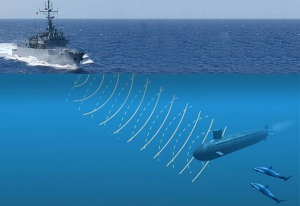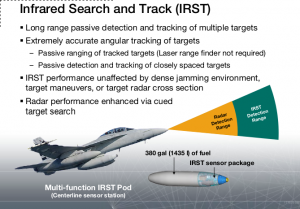Companion to Kashmir Fire: The v1.03 Command update
May 5, 2021 · Posted in Command
 Command: Kashmir Fire is on track to be released tomorrow and, as usual with campaign DLCs, it is going to be accompanied by a a major official update to CMO. The new v1.03 update not only consolidates all minor official releases since v1.02 but also introduces several important changes and new features. Let us walk through them:
Command: Kashmir Fire is on track to be released tomorrow and, as usual with campaign DLCs, it is going to be accompanied by a a major official update to CMO. The new v1.03 update not only consolidates all minor official releases since v1.02 but also introduces several important changes and new features. Let us walk through them:
- Major improvements to sonar model. Based on an ongoing discussion of existing flaws in the sonar model (see here for the tech background) with various SMEs both on and off the forum, we have renovated many aspects of the sonar model in order to improve its real-world fidelity. A brief summary of the changes included:
– The thermocline layer is generally weaker then before for a given location, and completely stops being effective at 70+ degrees north or south latitude.
– The minimum bottom depth necessary to achieve converge zone (CZ) propagation is sharply increased per given location, and is no longer static but dependent on latitude. CZs are now also impossible at 70+ degrees north or south latitude.
– Most under-layer sonars (SOSUS/SURTASS excluded) lose the 2x detection range bonus afforded by the deep sound channel. This sharply reduces the in-DSC detection ranges of VDS & towed arrays.
Combined, these changes have the effect of making submarines at great depth more difficult to detect with towed arrays or VDS, and shifting the emphasis more to direct-path detections at the expense of CZs.  Select IRST/FLIR systems can now produce AAW fire control-grade data, allowing EMCON-silent engagements with AMRAAM-class weapons (background discussion here ). Note that the fire-control data generated by advanced IRSTs can be used not only for direct onboard shooting (e.g. F-18E uses IRST-21 to silently shoot AMRAAMs at target) but it can also be distributed to other platforms via CEC (e.g. F-18E silently tracks target, hands off to CEC-equipped ship which silently shoots SM-6 at target).
Select IRST/FLIR systems can now produce AAW fire control-grade data, allowing EMCON-silent engagements with AMRAAM-class weapons (background discussion here ). Note that the fire-control data generated by advanced IRSTs can be used not only for direct onboard shooting (e.g. F-18E uses IRST-21 to silently shoot AMRAAMs at target) but it can also be distributed to other platforms via CEC (e.g. F-18E silently tracks target, hands off to CEC-equipped ship which silently shoots SM-6 at target).
NOTE: Scenarios will need to be made/rebuilt in DB3000 v488+ in order to use this feature. These are the sensors in DB3000 v488 that have this ability.- Visual and IR sensors are now also susceptible to look-down clutter. For example it is easier for an IRST (or the plain Mk1 Eyeball) to pick out an aircraft over the horizon line than against the surface background. This provides an extra incentive to “go low”, even for VLO aircraft, and makes terrain-hugging cruise missiles even harder to spot.
- Datalink + TARH AAW missiles (e.g. AMRAAM, SM-6 etc.) can now go active without immediately going autonomous. This allows such missiles to be guided with greater precision & reliability against VLO targets or in strong OECM environment. The datalink is cut instead only when the missile acquires the target (or impacts on it, still under positive control from the link provider.
- Various improvements in ballistic missile & BMD modeling, including fixing the simulation slowdown caused by ABM DLZ calculations.
- Numerous smaller changes and quality-of-life additions. As a quick example, it is now much easier to visually spot when a side/group/unit’s doctrine & ROE settings are overridden at a higher (parent) or lower (children) level, as they are now displayed in a different color when they do. Also as a popular request, the LOS-tool now supports altitude input in feet in addition to meters.
- The v488 release of the DB3000 database, incorporating countless player requests and new additions as well as numerous tweaks and fixes. You can view the complete DB changelog here.
The v1.03 update will be released tomorrow, together with Kashmir Fire. The Command development team is already busy assembling the follow-on updates together with all other commercial and professional projects underway. Stay tuned!
Comments
Leave a Reply
You must be logged in to post a comment.





